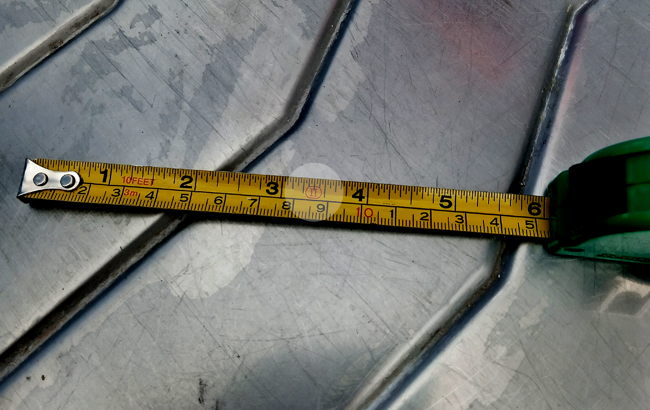HANDS:
hands
hands title:
§7. Rule 6: Measuring
hands date:
9 July 2022
hands text:
Our practical man is neither a man of science
nor a student of art, as these terms are generally understood,
but the man who gets the job done.
But the man who ignores the principles underlying his work
can never take an intelligent interest in it, with the result
that it must tend to become boring rather than pleasurable to him.
Such a man is condemned to a lifetime's hard labour.
nor a student of art, as these terms are generally understood,
but the man who gets the job done.
But the man who ignores the principles underlying his work
can never take an intelligent interest in it, with the result
that it must tend to become boring rather than pleasurable to him.
Such a man is condemned to a lifetime's hard labour.
01
Measuring is a mechanical skill that requires a degree of coordination between the hand and the eye, plus a certain technique to guarantee consistency .
02
It boils down to three simple ideas.
03
First, your measurements determine your cuts, and the cuts determine the end product. You can't produce a decent product if your measurements are poor.
04
Second, measuring is a habit-based skill. It is, therefore, irrelevant if the tolerances for the project that you may be doing right now are low. It's necessary to maintain the correct routine until it becomes second nature. Until such a habit is formed, deliberate effort is required. Think long term.
05
Third, you should know your tolerances and how your tools contribute to the overall result. Here simple considerations are to be kept in mind.
06
Not all measuring instruments are equal. In many shops, you can buy, say, a spirit level very cheaply, with an accuracy of, for example, 1.5 mm per 1 meter. Such a level is useless.
07
The accuracy of many measuring instruments can be evaluated manually. For example, to check a spirit level, you should level it against a flat surface and make marks. Then, flip it 180 degrees and align with the marks you made. The position of the bubble should remain the same. Obviously, the greater the distance between the marks, the more accurate the check will be. The accuracy of a square is checked using the Pythagorean Theorem: a triangle made using this square must have sides that are multiples of 3, 4, and 5. Again, the accuracy of the check will be determined by the size of the triangle and the accuracy of your tape measure.
08
The accuracy of most tools is specified by the manufacturer. In order for this information to make sense, you must have some idea about the acceptable tolerances for your work. All measuring tools must be within this level of accuracy.
09
It is, therefore, important to have at least one tool with a known level of accuracy. We suggest this to be a tape measure, the accuracy of which is determined by standards. In Europe, this is Directive 2014/32/EU.

10
A tape's compliance with European Standards is indicated by Roman numerals on the tape itself. If your tape measure corresponds to Class I, then the maximum permissible error (MPE) at a distance of 5 meters will be no more than 0.6 mm, at 50 m - no more than 5.1 mm. For Class II, it's no more than 1.3 mm and 10.1 mm, respectively, and for Class III, no more than 2.6 mm and 20.6 mm. Thus, if you are using a Class I tape measure, then a laser level with an accuracy of ±1.5mm/10m would give you a lower level of accuracy.
